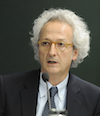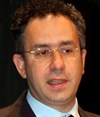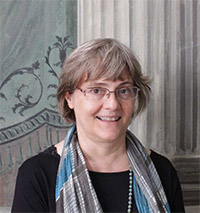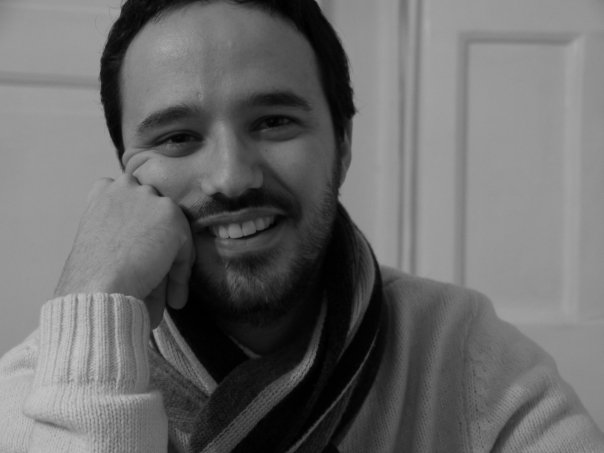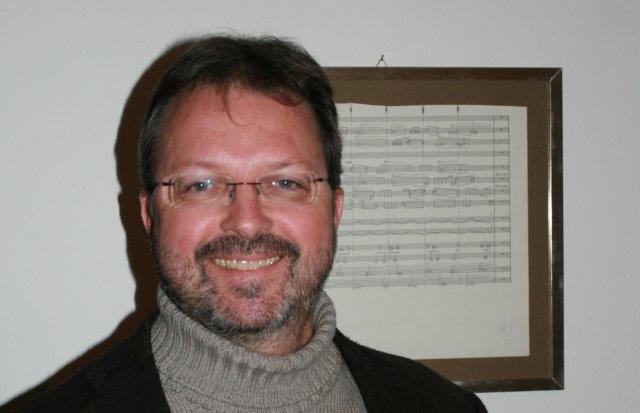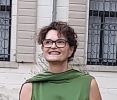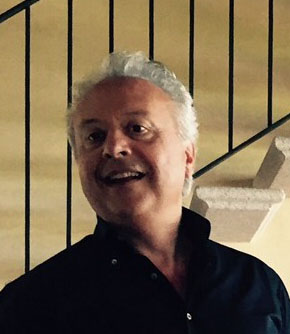Studying at the University of Verona
Here you can find information on the organisational aspects of the Programme, lecture timetables, learning activities and useful contact details for your time at the University, from enrolment to graduation.
Academic calendar
The academic calendar shows the deadlines and scheduled events that are relevant to students, teaching and technical-administrative staff of the University. Public holidays and University closures are also indicated. The academic year normally begins on 1 October each year and ends on 30 September of the following year.
Course calendar
The Academic Calendar sets out the degree programme lecture and exam timetables, as well as the relevant university closure dates..
| Period | From | To |
|---|---|---|
| Sem 1A | Sep 23, 2019 | Oct 31, 2019 |
| Sem 1B | Nov 11, 2019 | Jan 11, 2020 |
| Sem 2A | Feb 17, 2020 | Mar 28, 2020 |
| Sem 2B | Apr 6, 2020 | May 30, 2020 |
| Session | From | To |
|---|---|---|
| Sessione d'esame invernale | Jan 13, 2020 | Feb 15, 2020 |
| Sessione d'esame estiva (gli esami sono sospesi durante la sessione di laurea) | Jun 3, 2020 | Jul 25, 2020 |
| Sessione d'esame autunnale | Aug 24, 2020 | Sep 19, 2020 |
| Session | From | To |
|---|---|---|
| Sessione di laurea estiva | Jul 6, 2020 | Jul 11, 2020 |
| Sessione di laurea autunnale 19-20 | Nov 2, 2020 | Nov 7, 2020 |
| Period | From | To |
|---|---|---|
| Festa di Ognissanti | Nov 1, 2019 | Nov 1, 2019 |
| Sospensione delle lezioni | Nov 2, 2019 | Nov 2, 2019 |
| Festa dell'Immacolata | Dec 8, 2019 | Dec 8, 2019 |
| Vacanze di Natale | Dec 23, 2019 | Jan 6, 2020 |
| Vacanze di Pasqua | Apr 10, 2020 | Apr 14, 2020 |
| Festa della Liberazione | Apr 25, 2020 | Apr 25, 2020 |
| Festa del Lavoro | May 1, 2020 | May 1, 2020 |
| Sospensione delle lezioni | May 2, 2020 | May 2, 2020 |
| Festa del Santo Patrono | May 21, 2020 | May 21, 2020 |
| Sospensione delle lezioni | May 22, 2020 | May 23, 2020 |
| Festa della Repubblica | Jun 2, 2020 | Jun 2, 2020 |
| Vacanze estive | Aug 10, 2020 | Aug 15, 2020 |
Exam calendar
Exam dates and rounds are managed by the relevant Culture and Civilisation Teaching and Student Services Unit.
To view all the exam sessions available, please use the Exam dashboard on ESSE3.
If you forgot your login details or have problems logging in, please contact the relevant IT HelpDesk, or check the login details recovery web page.
Academic staff

Bassetti Massimiliano
 massimiliano.bassetti@univr.it
massimiliano.bassetti@univr.it
 045802 8376
045802 8376
 andrea.chiurato@univr.it
andrea.chiurato@univr.it
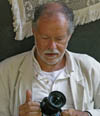
Mastrocinque Attilio
 attilio.mastrocinque@univr.it
attilio.mastrocinque@univr.it
 +39 045802 8386
+39 045802 8386
 dino.piovan@univr.it
dino.piovan@univr.it

Rocconi Eleonora
 eleonora.rocconi@univr.it
eleonora.rocconi@univr.it
 alberto.scandola@univr.it
alberto.scandola@univr.it
Tani Stefano
 stefano.tani@univr.it
stefano.tani@univr.it
 +39 045802 8110
+39 045802 8110
 luciamaddalena.tissi@univr.it
luciamaddalena.tissi@univr.it
 carlo.vannini@accademiabelleartiverona.it
carlo.vannini@accademiabelleartiverona.it
Study Plan
The Study Plan includes all modules, teaching and learning activities that each student will need to undertake during their time at the University.
Please select your Study Plan based on your enrollment year.
1° Year
| Modules | Credits | TAF | SSD |
|---|
1 module to be chosen among the following2 modules to be chosen among the following1 module to be chosen between the following2° Year activated in the A.Y. 2020/2021
| Modules | Credits | TAF | SSD |
|---|
2 modules to be chosen among the following1 module to be chosen among the following1 module to be chosen among the following| Modules | Credits | TAF | SSD |
|---|
1 module to be chosen among the following2 modules to be chosen among the following1 module to be chosen between the following| Modules | Credits | TAF | SSD |
|---|
2 modules to be chosen among the following1 module to be chosen among the following1 module to be chosen among the following| Modules | Credits | TAF | SSD |
|---|
Legend | Type of training activity (TTA)
TAF (Type of Educational Activity) All courses and activities are classified into different types of educational activities, indicated by a letter.
Comparative Grammar of Classical Languages (M) (2020/2021)
Teaching code
4S02273
Teacher
Coordinator
Credits
6
Language
Italian
Scientific Disciplinary Sector (SSD)
L-LIN/01 - HISTORICAL AND GENERAL LINGUISTICS
Period
CuCi IIA, CuCi IIB
Learning outcomes
The course of Comparative Grammar of Classical Languages gives an introduction in the comparative study of the Ancient Indo-European languages, based on the reconstructive method, in order to describe selected grammatical categories of the Protolanguage (Proto-Indo-European). The structural aspects of the development and change of some grammatical categories, described in a diachronic perspective, especially of those belonging to the nominal and verbal morphology, are particularly referring to Old Greek and Latin, Sanskrit and the German languages. The phenomena will be presented through the reading and discussion of selected texts in order to show their reconstruction for the protolanguage and of some pragmatic or syntactic features in the texts. The texts will be chosen among the oldest documents of some Indo-European languages such as Mycenaean Greek, Old Latin, Vedic, Gothic, Hittite and Lithuanian. Expected results Adequate knowledge of the history and methods of the traditional studies in Comparative Indo-European linguistics.- Adequate knowledge of the morphological inventory for nominal and verbal derivation - The ability to understand and apply the comparative method on the base of the attested languages. – The ability to recognize forms and morphemes, phrases and categories in the Ancient languages and to compare them. The skill to use the right concepts and a correct scientific terminology when discussing issues of (proto-)language reconstruction, language change, language comparison. PREREQUISITES The basic knowledge provided by the course of Introduction in the study of the Indo-European languages.
Program
The course of Comparative Grammar of the Classical Languages offers an overview of the attestations in terms of texts and grammars of some languages belonging to the Indo-European family. In particular, a diachronic linguistic analysis of the grammatical categories of the ancient Indo-European languages and an essay of some textual typologies transversal to different languages are offered with a view to their possible reconstruction in the Protolanguage. Cultural, religious and mythological aspects will also be presented in a comparative key. The contents will in fact be presented and commented through the reading of archaic texts of some languages ie. such as Mycenaean Greek, archaic Latin, Sanskrit (Vedic) Gothic, Hittite, Lithuanian. Particular writing systems (both alphabets and logographic system) will be also presented in relation to some Ancient languages.
The texts will be provided by the teacher during the course.
Beekes, Robert S.P., 1995, Comparative Indo-European linguistics: an introduction, Amsterdam
Clackson, James, 2007, Indo-European Linguistics. An Introduction, Cambridge.
Fortson, Benjamin W., 2004, Indo-European language and culture. An introduction, Malden, MA
Giacalone Anna, Paolo Ramat, 1994, Le lingue Indoeuropee, Il Mulino, Bologna
Lehmann, W.P., 1999, La linguistica indoeuropea, (trad. italiana) Mulino, Bologna
Examination Methods
Oral exam and presentation of a paper during the class.
At the end of the course, the student will acquire an adequate knowledge of the history and methods of the traditional studies in Comparative Indo-European linguistics, in particular:
- Adequate knowledge of the morphological inventory for nominal and verbal derivation
- The ability to understand and apply the comparative method on the base of the attested languages. – The ability to recognize forms and morphemes, phrases and categories in the Ancient languages and to compare them.
-The skill to use the right concepts and a correct scientific terminology when discussing issues of the reconstruction of the (Proto-)language, language change, language comparison.
- to translate and linguistically comment the texts analyzed together.
Type D and Type F activities
| years | Modules | TAF | Teacher |
|---|---|---|---|
| 1° 2° | The origins of Christianity | F |
Augusto Barbi
(Coordinator)
|
| years | Modules | TAF | Teacher |
|---|---|---|---|
| 1° 2° | Laboratory of ancient greek | F |
Dino Piovan
(Coordinator)
|
| 1° 2° | Latin Laboratory | F |
Giulia Beghini
(Coordinator)
|
| 1° 2° | Opera Workshop | F |
Nicola Pasqualicchio
(Coordinator)
|
| 1° 2° | Presente e futuro del pianeta. economia, sostenibilità e politiche | F |
Gian Maria Varanini
(Coordinator)
|
| years | Modules | TAF | Teacher |
|---|---|---|---|
| 1° 2° | The origins of Christianity | F |
Augusto Barbi
(Coordinator)
|
| years | Modules | TAF | Teacher |
|---|---|---|---|
| 1° 2° | Convegno internazionale “la questio de aqua et terra di dante alighieri: testo e contesto” | F |
Paolo Pellegrini
(Coordinator)
|
| 1° 2° | Laboratory of ancient greek | F |
Dino Piovan
(Coordinator)
|
| 1° 2° | Latin Laboratory | F |
Giulia Beghini
(Coordinator)
|
| 1° 2° | Opera Workshop | F |
Nicola Pasqualicchio
(Coordinator)
|
| 1° 2° | Presente e futuro del pianeta. economia, sostenibilità e politiche | F |
Gian Maria Varanini
(Coordinator)
|
| 1° 2° | Un patrimonio urbano da ri-conoscere e ri-valutare: ville e palazzi storici di verona e circondario | F |
Gian Maria Varanini
(Coordinator)
|
| years | Modules | TAF | Teacher |
|---|---|---|---|
| 1° 2° | Giornate fai di primavera (1 cfu) | F |
Monica Molteni
(Coordinator)
|
| 1° 2° | Laboratory of photo | F |
Carlo Vannini
(Coordinator)
|
| 1° 2° | Laboratory of ancient greek | F |
Dino Piovan
(Coordinator)
|
| 1° 2° | Humanistic informatics laboratory (m) | F |
Stefano Minozzi
(Coordinator)
|
| 1° 2° | Latin Laboratory | F |
Giulia Beghini
(Coordinator)
|
| 1° 2° | Worshop for cultral events | F | Not yet assigned |
| years | Modules | TAF | Teacher |
|---|---|---|---|
| 1° 2° | Fai un giro in villa (1 cfu) | F |
Monica Molteni
(Coordinator)
|
| 1° 2° | Laboratory of ancient greek | F |
Dino Piovan
(Coordinator)
|
| 1° 2° | Humanistic informatics laboratory (m) | F |
Stefano Minozzi
(Coordinator)
|
| 1° 2° | Latin Laboratory | F |
Giulia Beghini
(Coordinator)
|
| 1° 2° | Worshop for cultral events | F | Not yet assigned |
| years | Modules | TAF | Teacher |
|---|---|---|---|
| 1° 2° | Summer School internazionale in Studi danteschi Ravenna-Verona | F |
Paolo Pellegrini
(Coordinator)
|
| 1° 2° | Univero’ 2019 | F | Not yet assigned |
Career prospects
Module/Programme news
News for students
There you will find information, resources and services useful during your time at the University (Student’s exam record, your study plan on ESSE3, Distance Learning courses, university email account, office forms, administrative procedures, etc.). You can log into MyUnivr with your GIA login details: only in this way will you be able to receive notification of all the notices from your teachers and your secretariat via email and also via the Univr app.
Graduation
List of thesis proposals
| theses proposals | Research area |
|---|---|
| tesi di Glottologia, Storia comparata, Linguistica storica | ENGLISH LANGUAGE - Grammar and Syntax – Grammatik und Syntax |
| tesi di Glottologia, Storia comparata, Linguistica storica | GERMANIC LANGUAGE - Dialectology - Dialektologie |
| tesi di Glottologia, Storia comparata, Linguistica storica | HUMANITIES & SOCIAL STUDIES - HUMANITIES & SOCIAL STUDIES |
| tesi di Glottologia, Storia comparata, Linguistica storica | Indo-European languages & literatures - Indo-European languages & literatures |
| tesi di Glottologia, Storia comparata, Linguistica storica | LINGUISTICS - LINGUISTICS |
Gestione carriere
Linguistic training CLA
Student mentoring
Requisiti classi di abilitazione insegnamento
Requisiti necessari per accedere alle classi di abilitazione per l'insegnamento.
vedi allegato pdf
Inoltre, per informazioni sui 24 CFU nelle discipline antropo-psico-pedagogiche e nelle metodologie e tecnologie didattiche, si veda -> LINK
Documents
| Title | Info File |
|---|---|
|
|
pdf, it, 307 KB, 30/11/21 |
Student login and resources
Modalità e sedi di frequenza
La frequenza non è obbligatoria.
Maggiori dettagli in merito all'obbligo di frequenza vengono riportati nel Regolamento del corso di studio disponibile alla voce Regolamenti nel menu Il Corso. Anche se il regolamento non prevede un obbligo specifico, verifica le indicazioni previste dal singolo docente per ciascun insegnamento o per eventuali laboratori e/o tirocinio.
È consentita l'iscrizione a tempo parziale. Per saperne di più consulta la pagina Possibilità di iscrizione Part time.
Le sedi di svolgimento delle lezioni e degli esami sono le seguenti:
- Polo Zanotto (vicino si trova il Palazzo di Lettere)
- Palazzo ex Economia
- Polo Santa Marta
- Istituto ex Orsoline
- Palazzo Zorzi (Lungadige Porta Vittoria, 17 - 37129 Verona)




